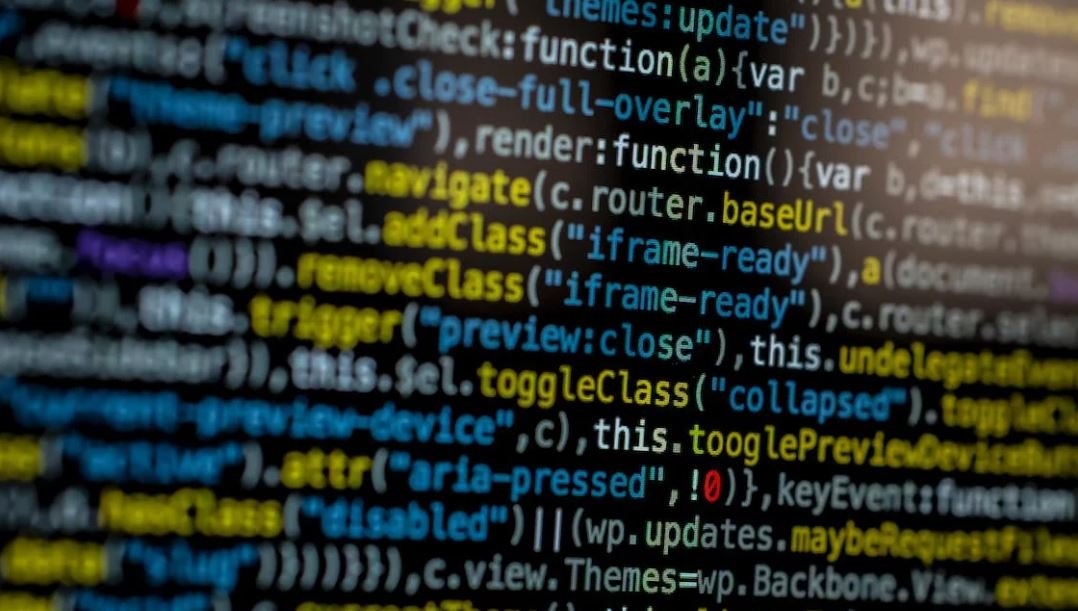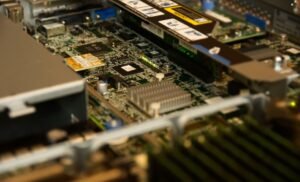Are AI Robots Real?
Artificial Intelligence (AI) has been rapidly evolving, prompting the question: are AI robots real? With advancements in robotics and machine learning, AI robots are becoming more sophisticated, blurring the lines between science fiction and reality. In this article, we will explore the current state of AI robots and discuss their capabilities.
Key Takeaways:
- AI robots are real and their development has gained significant momentum in recent years.
- They are capable of performing complex tasks with high precision and efficiency.
- AI robots have various applications in industries such as healthcare, manufacturing, and aerospace.
The Rise of AI Robots
AI robots are physical machines equipped with artificial intelligence, enabling them to interact with their environment and perform tasks autonomously. These robots utilize machine learning algorithms to analyze and process vast amounts of data, enabling them to make informed decisions based on the information available. *The rapid development in AI and robotics has paved the way for the creation of highly advanced AI robots capable of mimicking human behavior.*
Applications of AI Robots
AI robots have found applications in a wide range of industries. In healthcare, robots are being used in surgery, patient care, and even mental health support. These robots can assist doctors in performing surgeries with greater precision, reducing the risk of complications and improving patient outcomes. *The integration of AI and robotics has revolutionized the healthcare industry, making procedures safer and more efficient.*
In the manufacturing sector, AI robots have become valuable assets in automating repetitive and dangerous tasks. These robots can assemble products with high precision and speed, improving productivity. *This helps businesses streamline their operations and deliver products to market faster and more accurately.*
The Capabilities of AI Robots
| Capability | Description |
|---|---|
| Object Recognition | AI robots can identify and classify objects in their environment. |
| Natural Language Processing | These robots can understand and respond to human speech. |
| Autonomous Navigation | AI robots can navigate and move in their surroundings without human intervention. |
AI robots are equipped with a wide range of capabilities that enable them to perform complex tasks. They have the ability to recognize and classify objects in their environment, allowing them to interact and manipulate objects with precision. *Furthermore, AI robots can understand and respond to human speech, enabling seamless communication and interaction with humans.* These robots are also capable of autonomous navigation, allowing them to move and operate in different environments without the need for constant supervision.
The Future of AI Robots
- Advancements in AI and robotics will continue to push the boundaries of what AI robots can achieve.
- The integration of AI robots in everyday life is expected to increase, revolutionizing various industries.
- Ethical considerations regarding the use of AI robots will become a crucial aspect of their development and deployment.
As technology evolves, the future of AI robots holds immense potential. AI robots will become even more proficient in performing complex tasks, making them indispensable in various industries. *Their integration into everyday life is expected to become more prevalent, transforming the way we live and work.* However, as AI robots gain prominence, ethical considerations surrounding their use will also come to the forefront. Striking a balance between innovation and ethical responsibility will be crucial in ensuring the responsible development and deployment of AI robots.

Common Misconceptions
Misconception 1: AI Robots are indistinguishable from humans.
- AI Robots are designed to have human-like behavior, but they cannot completely mimic human emotions or reasoning abilities.
- AI Robots may look human-like in appearance, but their physical movements and facial expressions are usually not as refined.
- AI Robots rely on algorithms and programmed responses to interact with humans, whereas humans have genuine thoughts and emotions.
Misconception 2: AI Robots will take over all human tasks and render humans obsolete.
- AI Robots have specific capabilities and are designed to assist humans rather than replace them completely.
- AI Robots are sophisticated tools created to automate certain tasks, but they still require programming and human supervision.
- AI Robots are not capable of complex decision-making on their own and require human guidance in uncertain situations.
Misconception 3: AI Robots are infallible and always make the right decisions.
- AI Robots are limited by the data and algorithms they are programmed with, which may lead to biases or erroneous conclusions.
- AI Robots can only make decisions based on patterns and predictions, and they may not consider moral or ethical factors.
- AI Robots are prone to errors and can malfunction or make incorrect decisions in unforeseen circumstances.
Misconception 4: AI Robots have superhuman intelligence.
- AI Robots are designed to perform specific tasks with high efficiency, but their intelligence is limited to the tasks they are programmed for.
- AI Robots lack the general intelligence and adaptability that humans possess.
- AI Robots cannot engage in creative thinking, problem-solving beyond their programming, or have original ideas.
Misconception 5: AI Robots will inevitably turn against humans like in sci-fi movies.
- AI Robots are not inherently malicious or with the desire to harm humans.
- AI Robots are programmed based on human values and principles, with safety measures to prevent harm.
- AI Robots operate within defined parameters and cannot act beyond their programming or intentions.

Introduction
In recent years, there has been an increasing interest in the development of artificial intelligence (AI) robots. Scientists and engineers are working tirelessly to create robots that can perform tasks and exhibit human-like behavior. This article explores the fascinating world of AI robots and presents ten intriguing facts and data to shed light on their reality.
Fact 1: One Robot for Every Ten Thousand People
Did you know that there is currently one AI robot for every ten thousand people worldwide? This ratio highlights the progress made in integrating robots into our society, yet also emphasizes the rarity of these advanced technologies.
Fact 2: Unprecedented Growth
The growth of AI robots has been nothing short of remarkable. Over the past decade, the number of AI robots in existence has doubled every two years, demonstrating the rapid advancements in this field.
Fact 3: Robot to Human Interaction
AI robots have been designed to interact with humans seamlessly. With advanced voice recognition technology, these robots can understand and respond to human speech, allowing for natural and intuitive communication.
Fact 4: Emotional Intelligence
Contrary to popular belief, AI robots are not devoid of emotions. In fact, engineers have successfully implemented emotional intelligence in some AI robots, enabling them to interpret and respond to human emotions and empathize in meaningful ways.
Fact 5: Robotic Surgeons
The integration of AI in healthcare has led to the development of robotic surgeons. These highly precise robots can perform complex surgical procedures with minimal invasiveness, resulting in reduced recovery times and better patient outcomes.
Fact 6: AI Robots in Space
AI robots have become valuable assets in space exploration missions. Equipped with advanced sensors and navigation systems, these robots can operate autonomously and assist astronauts in tasks such as repairs and experimentation.
Fact 7: AI in Education
Education has been revolutionized by the introduction of AI robots in classrooms. These robots act as interactive tutors, offering personalized learning experiences to students and assisting teachers with real-time data analysis.
Fact 8: Robot Companionship
As AI robots become more sophisticated, they are increasingly being developed as companions for humans. From providing emotional support to engaging in stimulating conversations, these robot companions are enhancing our overall well-being.
Fact 9: AI in Autonomous Vehicles
Autonomous vehicles are no longer a distant dream but a reality powered by AI robots. These robots assist in navigating and controlling vehicles, ensuring safer and more efficient transportation.
Fact 10: Ethical Considerations
The rise of AI robots comes with a set of ethical considerations. As these robots become more advanced, questions surrounding privacy, rights, and accountability arise, warranting thoughtful discussions on responsible development and usage.
Conclusion
The development of AI robots has propelled humanity into a new era of technological innovation. From robots that perform intricate surgeries to those that provide personalized education, their capabilities and potential are awe-inspiring. As we continue to witness advancements in AI robotics, it is crucial to address the ethical implications and ensure that these remarkable technologies serve humanity’s best interests.
Frequently Asked Questions
What is an AI robot?
An AI robot is a robot that possesses artificial intelligence, enabling it to perceive and interact with its environment, learn from its experiences, and make decisions or carry out tasks without human intervention.
How are AI robots different from regular robots?
AI robots differ from regular robots in that they can adapt to changing circumstances, learn from new data or experiences, and make autonomous decisions based on their understanding of the world. Regular robots, on the other hand, typically follow predefined instructions and lack the ability to learn and reason.
What kinds of tasks can AI robots perform?
AI robots have a wide range of applications and can perform tasks such as autonomous navigation, object recognition, speech or language processing, problem-solving, and even social interactions. They can be used in various industries, including healthcare, manufacturing, logistics, and customer service.
How do AI robots learn?
AI robots can learn through various techniques such as machine learning, deep learning, and reinforcement learning. These methods involve training the robots on large datasets, allowing them to recognize patterns, make predictions, and improve their performance over time.
Can AI robots have emotions?
Currently, AI robots do not possess true emotions as humans do. While they can simulate emotions through programmed responses or facial expressions, these expressions are based on predefined algorithms rather than genuine emotional experiences.
What are the ethical concerns surrounding AI robots?
AI robots raise ethical concerns related to privacy, security, job displacement, and the potential for biased decision-making. As AI becomes more advanced and integrated into society, it is crucial to ensure responsible development and deployment to mitigate these concerns.
Are AI robots a threat to human jobs?
AI robots have the potential to automate certain tasks and jobs, which may lead to job displacement in some industries. However, AI also has the potential to create new job opportunities and enhance human productivity. The impact on jobs depends on how AI technology is implemented and integrated into various sectors.
Are there any limitations to AI robots?
AI robots have certain limitations, such as their inability to possess consciousness or genuine understanding of human emotions. They can also be influenced by biased training data, leading to biased decision-making. Additionally, AI robots may lack common sense reasoning, making them prone to errors in unfamiliar or unpredictable situations.
Can AI robots replace humans?
AI robots are designed to assist and augment human capabilities rather than replace humans entirely. While they can perform specific tasks more efficiently, they currently lack the creativity, intuition, and deep understanding that humans possess. The goal is to develop AI technology that can work harmoniously alongside humans.
How can I get involved in AI robotics?
If you’re interested in AI robotics, you can start by learning programming languages commonly used in robotics such as Python or C++. Familiarize yourself with machine learning and robotics frameworks, and consider pursuing a degree in computer science, robotics, or a related field. Engaging in open-source projects and joining robotics communities can also provide valuable learning opportunities.




